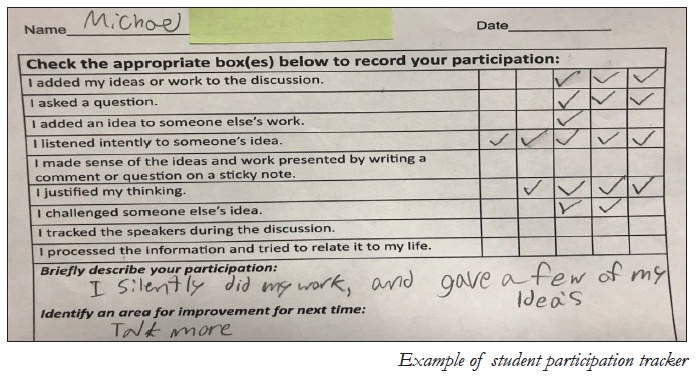Mollie Siegel, Louisville, KY, trc-molliesiegel@cpm.org
Have you found that your class discussions have you speaking much more than the students? Does it seem like the students that do volunteer are a predictable few while the rest of the class sits idly? Or when you have asked for volunteers to get the discussion started, all you hear are crickets? This shared experience led Mollie Siegel (trc-molliesiegel@cpm.org), Cathy Sinnen (trc-cathysinnen@cpm.org), and Penny Smits (trc-pennysmits@cpm.org) to wonder how they might be able to change this dynamic. As members of CPM’s Teacher Research Corps, the aim of their action research project was to foster richer whole-class discussion driven by student ideas. They conjectured that instructional moves could improve participation in whole-class discourse and, even more, involve the whole class in deeper thinking and mathematics.
Many of the initial discussions as a team were about their experiences facilitating class discussions. They had trouble narrowing the factors that contributed to a discussion that “went well.” It was easier to identify the pitfalls: one or two students participating, teacher questions that fall flat to a silent classroom, and disengaged students. This led the teacher researchers to identify the obstacles that kept students from participating. Four common themes emerged: shyness, fear of making mistakes, anxiety, and needing more processing time. In response, the team developed a whole-class discussion planner based on the work of Smith and Stein’s 5 Practices for Orchestrating Productive Mathematical Discussions.

They also curated specific teacher moves to address each obstacle and empowered students to self-regulate through a student participation tracker. Ultimately, students asserted more ownership over ideas, became better listeners, and spoke more productively in whole-class settings.
To read the entire white paper and gain access to all of the innovations and strategies, email Mark Coté.